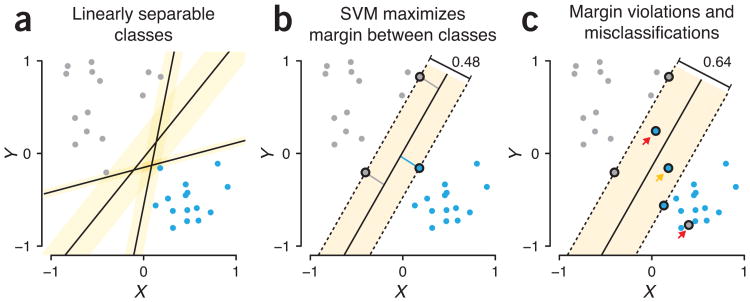Figure 1.
A support vector machine (SVM) classifies points by maximizing the width of a margin that separates the classes. (a) Points from two classes (gray, blue) that are perfectly separable by various lines (black) illustrate the concept of a margin (orange highlight), which is the rectangular region that extends from the separating line to the perpendicularly closest point. (b) An SVM finds the line (black) that has the widest margin (0.48). Points at the margin's edge (black outlines) are called support vectors—the margin here is not influenced by moving or adding other points outside it. (c) Imposing a separating line on linearly nonseparable classes will incur margin violations and misclassification errors. Data same as in b but with two additional points added (those that are misclassified). The margin is now 0.64 with six support vectors.

